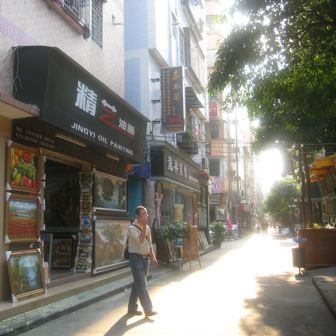 In part one of Finding Culture in New China, Sarika Chawla reported on her adventures in Guangzhou. In part two, she reports on how she found the unexpected in the bustling metropolis of Shenzhen.
In part one of Finding Culture in New China, Sarika Chawla reported on her adventures in Guangzhou. In part two, she reports on how she found the unexpected in the bustling metropolis of Shenzhen.
Now, here’s a surprising fact: the vast majority of Shenzhen residents are under 30 years old.
As a result, you’re unlikely to find elderly folk waxing poetic about old Shenzhen, or generations-old restaurants with grandma standing behind the stove.
Did razing an entire village and replacing it with an instant city also erase the “authentic” experiences that American travelers seek?
Only 30 years ago, Shenzhen was an unremarkable fishing village; today it is the thriving financial and industrial hub of South China. Due to its proximity to Hong Kong, Shenzhen was singled out as the first Special Economic Zone and established as a city in 1979.
Check out more articles from our New China series:
Today, it’s the biggest city in China when grouped with Hong Kong, and perhaps the richest in the country. Getting here is as easy as a short ferry or train ride from Hong Kong, or by train or road from Guangzhou.
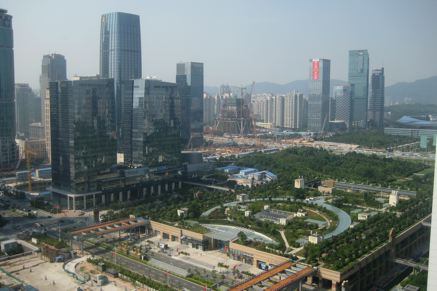 Note that even though it’s also a part of the Guangdong province, the dominant dialect is Mandarin, not Cantonese, since most residents come from other parts of China.
Note that even though it’s also a part of the Guangdong province, the dominant dialect is Mandarin, not Cantonese, since most residents come from other parts of China.
In terms of urbanization, Shenzhen much further along than Guangzhou and a very carefully planned city. There is a surprising amount of green space and tree-lined streets, along with sleek and sophisticated bars and restaurants, and cultural offerings such concert halls, art galleries, museums, and book shops. While sipping evening cocktails poolside at the Ritz-Carlton or Shangri-La hotel, surrounded by imposing skyscrapers, it’s hard to distinguish this city from any number of sparkling metropolises.
But it’s the unexpected that really sets this city apart.
Traveling to Shenzhen? Don’t miss world traveler and shopper extraordinaire Suzy Gershman’s Postcard from Shenzhen, China.
The first thing you might notice about Shenzhen is the proliferation of oddball theme parks. According to the locals, after China opened itself to the world in the 1970s, Chinese officials were so impressed by Disney and Six Flags-type entertainment that they considered it a necessary part of development.
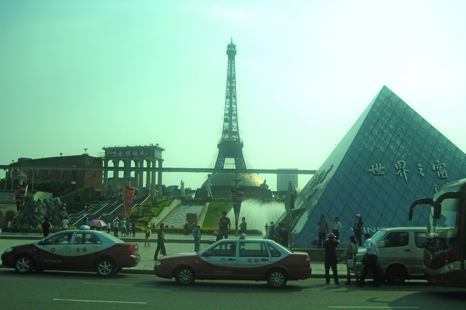 As a result, theme parks include: Splendid China, which showcases miniatures of China’s famous sites and historical figures; the Chinese Folk Culture Park, which features villages of cultural performances, parades and artworks; Windows of the World, where visitors can check out replicas of the world’s greatest attractions—from the Eiffel Tower to Angkor Wat to the Sydney Opera House—as well as mind-blowing theatrical spectacles that put Vegas to shame; and Happy Valley, which is the closest experience to Disney you’ll get (apart from Hong Kong Disney and Beijing’s Shijingshan Amusement Park).
As a result, theme parks include: Splendid China, which showcases miniatures of China’s famous sites and historical figures; the Chinese Folk Culture Park, which features villages of cultural performances, parades and artworks; Windows of the World, where visitors can check out replicas of the world’s greatest attractions—from the Eiffel Tower to Angkor Wat to the Sydney Opera House—as well as mind-blowing theatrical spectacles that put Vegas to shame; and Happy Valley, which is the closest experience to Disney you’ll get (apart from Hong Kong Disney and Beijing’s Shijingshan Amusement Park).
These parks are about as authentic to Chinese culture as Disney is to Anytown USA, but they are local institutions that shouldn’t be missed. If you’ve only got time for one experience, make it Windows of the World and cap the evening with a show and fireworks display.
Like theme parks? Check out the World’s Wackiest Theme Parks.
A bit off the beaten path from Shenzhen is another unexpected gem that shouldn’t be missed. Dafen Oil Painting Village is an example in irony when talking about authenticity. Hundreds of artists have set up shop here and can copy virtually any painting you desire, even from a photo, and ship it to you.
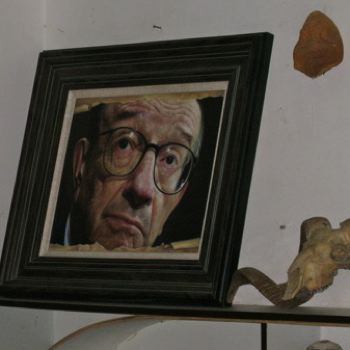 Raphaelite cherubs? Chairman Mao? Former Federal Reserve Chairman Alan Greenspan? Your grandchildren? It’s all there.
Raphaelite cherubs? Chairman Mao? Former Federal Reserve Chairman Alan Greenspan? Your grandchildren? It’s all there.
However, if getting a cheap knockoff isn’t your style, Dafen is also home to dozens of original painters producing top-quality—and a good amount of mediocre—art.
Although the village has been remodeled over the years, it’s a refreshing throwback with squat buildings versus towering skyscrapers, and charming courtyards where visitors can sit down for tea.
Finally, there is a side of China that the tourists don’t always get to experience—Sunday in the park.
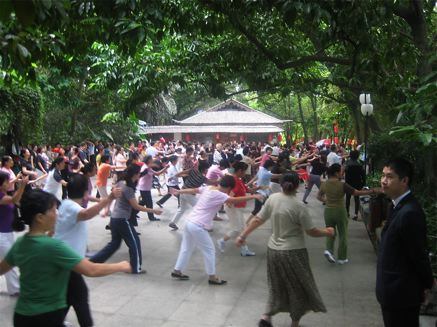 In Shenzhen, Lianhua Mountain Park (Lotus Mountain) is a sprawling, green oasis in the middle of the city. On Sunday morning, crowds gather to practice … everything.
In Shenzhen, Lianhua Mountain Park (Lotus Mountain) is a sprawling, green oasis in the middle of the city. On Sunday morning, crowds gather to practice … everything.
Down one path a group of pajama-clad locals twist and bend in elegant tai chi moves. On another patch of grass parents and kids run along hoisting kites in the air.
But that’s the expected.
The unexpected is discovering Shenzhen’s middle-aged and elderly population in the form of embracing couples rehearsing ballroom dancing in the park, while somewhere down the lane, peels ring out from a session of laughter therapy.
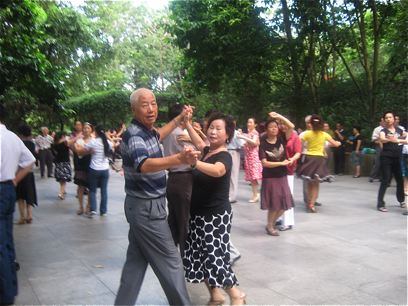 Elsewhere, a collection of singers and musicians, led by an enthusiastic conductor, heartily belts out Chinese songs—and a special rendition of “Red River Valley” for their “foreign friends.”
Elsewhere, a collection of singers and musicians, led by an enthusiastic conductor, heartily belts out Chinese songs—and a special rendition of “Red River Valley” for their “foreign friends.”
And, my favorite of all, a group of hip-swiveling, arm-waving women belly dancing their way through Middle Eastern and Bollywood tunes, who beam when we join in to share the joy.
Dancing in the heart of Shenzhen, I felt as if I had discovered the heart of China.
Text and photos by Sarika Chawla for PeterGreenberg.com. Alan Greenspan photo by Zach Everson.
Related links:












